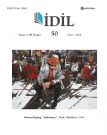PLASTİK SANATLAR EĞİTİMİNDE EĞİTİM TEKNOLOJİSİ
TECHNOLOGY OF EDUCATION IN PLASTIC ARTS EDUCATION
Author(s): Mücahit BoraSubject(s): Education, Fine Arts / Performing Arts, Aesthetics, Recent History (1900 till today)
Published by: Sanat ve Dil Araştırmaları Enstitüsü
Keywords: Ceramic; Jewelry; Wearable Art; 21st Century Art;
Summary/Abstract: In today’s information age, a knowledge-boom is experienced as a result of this change and development process; and thereby, the functions of information, access to information and the acquisition of the information also change. The contemporary society, which has gained scientific and technological qualifications compared to yesterday’s society, show structural and functional differences. All this changes and developments are affecting the basic model of education and training, and lead to revolutionary developments and conversions in education. In modern education concept, teacher-centered teaching and student-centered teaching have been replaced by students’ qualification-centered education. In this new understanding, the desired qualifications in a student being acquired is considered as the main goal, and the teacher is given the duty of being a guide for students, and the process of auditing in education is considered. In this context, teaching, education, educational technology and auditing in education concepts had to be defined again in the light of the new developments. The new products in the field of educational technology have been applied to increase the success of students in formal education, and to increase the productivity of the employees in non-formal education. Plastic arts is taught in our faculty; and since 1998, a discipline-based education (multiple-field training) model has been adopted and implemented. The discipline-based art education approach consists of four basic principles, which are plastic arts applied field studies, art history, art philosophy (aesthetics), art criticism and art review. With this research, the answer was sought to the question how plastic arts education technology and teaching-learning process, instructional tools, arrangement of teaching environments, instructional processes and instructional methods should be. Our research was conducted with the source review and compilation model. The studies in this field were examined, and in the light of these data, a sample of plastic arts education technology model was created.
Journal: İdil Sanat ve Dil Dergisi
- Issue Year: 7/2018
- Issue No: 50
- Page Range: 1287-1295
- Page Count: 9
- Language: Turkish

